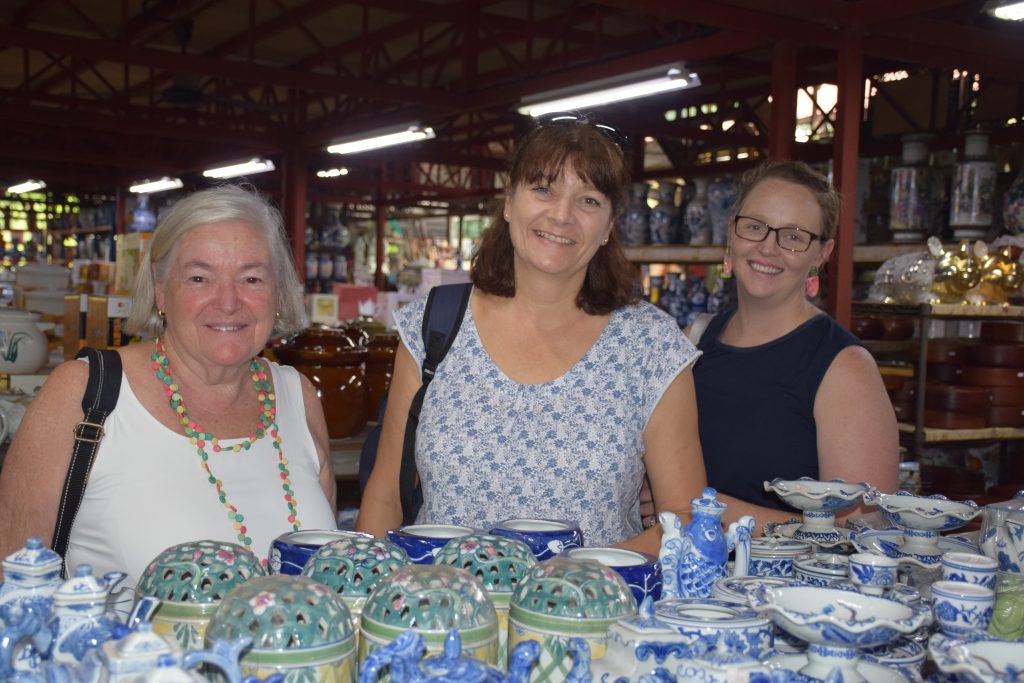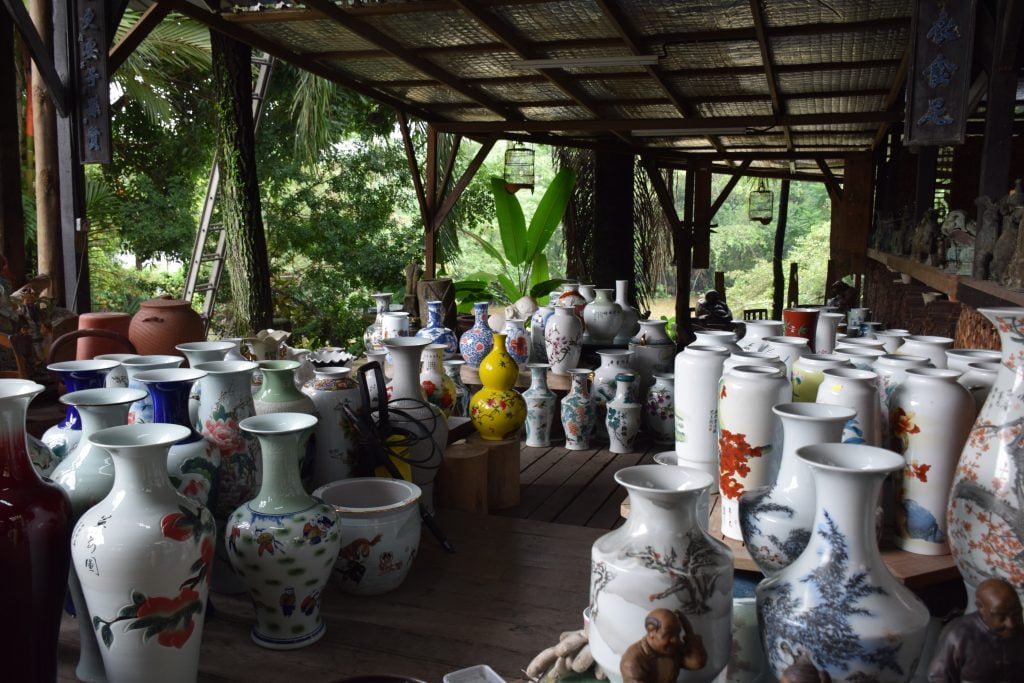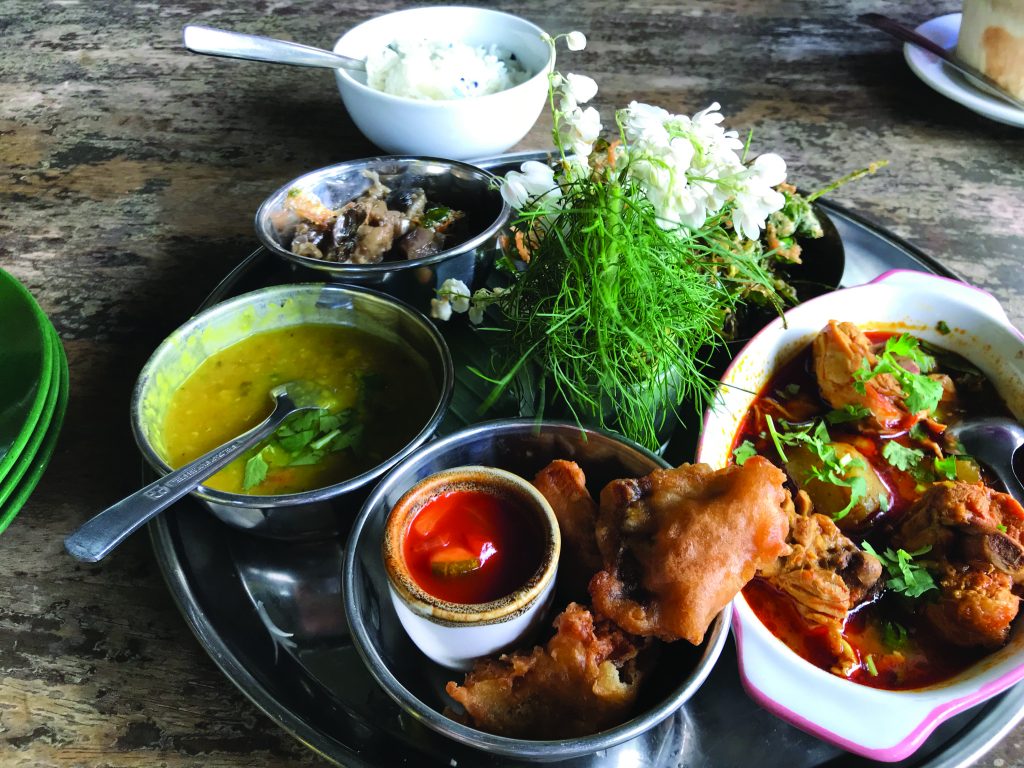
In a bid to learn more about Singapore’s traditional art scene and get into the countryside, I’ve joined a group of fifteen intrepid ANZA Tour members on the Journey West tour; heading to Thow Kwang Pottery Jungle in Jalan Bahar, then onto Bollywood Veggies for lunch. As we arrive at our first stop, tour guide Gek points out a family of wild boar grazing on the nature strip. It’s clear we’ve left the urban jungle behind.
Mouth of the dragon
The family-run Thow Kwang Pottery Jungle (85 Lorong Tawas via Clean Tech View, thowkwang.com.sg) is home to Singapore’s last firing dragon kiln, and the island’s largest variety of porcelain and pottery ware – a vast collection of earthen pots, colourful Peranakan bowls, and blue and white china.
The brick, wood-fired kiln, built in 1940, roars to life only a few times a year these days, taking 24 hours to reach a blistering 1,260°C. As the dragon is currently sleeping, we are allowed to step inside the 36-metre belly of the kiln, where a few thousand pieces of pottery are loaded in for each firing.
At its height, the kiln would be fired four times a month, going through a steady cycle of packing, firing, cooling and unpacking. “From the 1940s to 1970s, there was a thriving pottery industry in Singapore, with 20 dragon kilns in production, and Jurong’s white clay considered ideal for producing the cups used for the numerous rubber plantations on the island,” says Gek. “When the rubber plantations closed, there was demand in the 1970s for orchid pots. Unfortunately over the years, all but two of the kilns have shut down.”

Preserving traditions
With their lease up in 2021, and redevelopment looming, Thow Kwang and other Singapore cultural icons need continued support to preserve their legacy. “You need a lot of manpower and it’s much more time-consuming than gas or electric kilns, so why bother?” Gek asks the group. “The answer is that the ashes interact with the pottery and glaze, so each piece is different. That’s what the artists are after – the unique variations in colour and texture. Also, it’s a tribute to old Teochew and Chinese traditions.”
“You start digging a little deeper and you find all this traditional industry going on in these little hidden pockets in Singapore,” says tour member Fay Ford. “It is a real shame there isn’t the demand for this style of pottery firing, even though they still have the facilities here and the volunteer manpower. If it dies out because of infrastructure changes, it will be a shame, because it will gloss over important Singapore heritage.”

Bollywood bound
Laden with pottery purchases, we head for our second stop on the tour: rustic Bollywood Veggies (100 Neo Tiew Road, www.bollywoodveggies.com) To get to the organic farm we travel along heritage-protected Lim Chu Kang Road, lined with thick angsana, mahogany and rubber trees. The Heritage Road Scheme was launched in 2001 by the National Parks Board, to conserve the scenic and significant tree-lined roads of Singapore.
Bollywood is a 10-acre slice of green paradise, away from the bustling CBD, which runs educational programs, cooking classes and farm tours. It’s owned by eco warrior Ivy Singh-Lim and her husband Lim Ho Seng, ‘farmpreneurs’ who believe in sustainability and connection to the land. We happily potter through tropical fruit orchards, butterfly sanctuaries, medicinal garden beds, and more.
Escaping the heat of the day, the group gathers at Poison Ivy, Bollywood’s farm-to-table restaurant to enjoy a delicious Indian fusion feast, finishing with fig tea and moreish banana cake. As we make our way back to Singapore’s condos, skyscrapers and busy streets, it’s nice to know this heavenly rural patch still exists in Singapore.
ANZA Tours runs regular excursions to all corners of Singapore, uncovering its hidden treasures. Book here: anza.org.sg/tours








